10 Things you need to know about Clownfish

All photo’s in this article are copyrighted. © 2015 Robert Burgers and are used with the permission of the photographer.
Did you see “Finding Nemo”? Do you think you know all there is to know about Clownfish? Check out these “10 things you need to know about Clownfish” and enjoy them even more during your next dives.
- Clownfish became extremely popular after the Disney/Pixar’s 2003 film “Finding Nemo”. After that more and more “Nemo’s” are being kept and bred in captivity so people can buy them for their aquarium. After the release of the Hollywood success movie “Finding Nemo”, the population of anemonefish in the wild drastically reduced. According to a study conducted by the University of Cumbria, United Kingdom, in 2008, anemonefish population numbers fell by 75 % in some areas and reefs. Clownfish make up 43% of the global marine ornamental trade, and 25% of the global trade comes from fish bred in captivity, while the majority are captured from the wild accounting for decreased densities in exploited areas.
- Thirty species of Clownfish or anemonefish are recognized. Depending on species, anemonefish are overall yellow, orange, or a reddish or blackish color, and many show white bars or patches. The largest can reach a length of 18 centimetres (7.1 in), while the smallest barely achieve 10 centimetres (3.9 in).
- Anemonefish live in the warmer waters of the Indian and Pacific oceans, including the Great Barrier Reef and the Red Sea. Anemonefish live at the bottom of shallow seas in sheltered reefs or in shallow lagoons. You will not find Clownfish in the Caribbean, Mediterranean or Atlantic Ocean.
- The colorful Clown fish can live for 6 to 10 year in their natural habitats, in aquariums they live significantly shorter
- Clownfish and sea anemones have a symbiotic relationship, each providing a number of benefits to the other. The sea anemone protects the Clownfish from predators, as well as providing food through the scraps left from the anemone’s meals and occasional dead anemone tentacles. In return, the Clownfish defends the anemone from its predators, and parasites.
- There are several theories about how Clownfish can survive the sea anemone poisonous tentacles:
The slimy coating of the Clownfish may be based on sugars rather than proteins. This would mean that anemones fail to recognize the Clownfish as potential food and do not fire their sting organelles.
After living together for century’s Clownfish may have become immune to the toxins of their host anemone. Clownfish are the best known example of fish that are able to live in between the sea anemone tentacles, but there are several others, including juvenile domino damsel, certain cardinalfish, Bucchich’s (or anemone) goby and juvenile painted greenling.
- Despite the friendly name, Clownfish can be quite aggressive. They are known to fiercely defend their territory, especially when they laid their eggs. They can attack divers when they come too close to “their” anemone, but sometimes they even attack divers several meters away.
- Clownfish are omnivorous and can feed on undigested food from their host anemones, the other way around, the fecal matter from the Clownfish provides nutrients to the sea anemone. Clownfish primarily feed on small zooplankton, such as copepods and tunicate larvae, with just a small portion of their diet coming from algae. Sometimes Clownfish may also consume the tentacles of their host anemone.
- In a group of Clownfish, there is a strict dominance hierarchy. The largest and most aggressive female is found at the top. Only two Clownfish, a male and a female, in a group. Clownfish are sequential hermaphrodites, meaning that they develop into males first, and when they mature, they become females. If the female Clownfish is removed from the group one of the largest and most dominant males will become a female. The remaining males will move up a rank in the hierarchy. Clownfish lay eggs on any flat surface close to their host anemones. In the wild, Clownfish spawn around the time of the full moon. Depending on the species, Clownfish can lay hundreds or thousands of eggs. The male parent guards the eggs until they hatch about six to ten days later, typically two hours after dusk.
- On our house reef “Paradise Garden” you can find several different species of Clownfish that live in several species of sea anemones, next to Pygmy Seahorses, Hawksbill Turtles, hundreds of Nudibranches and Shrimps.








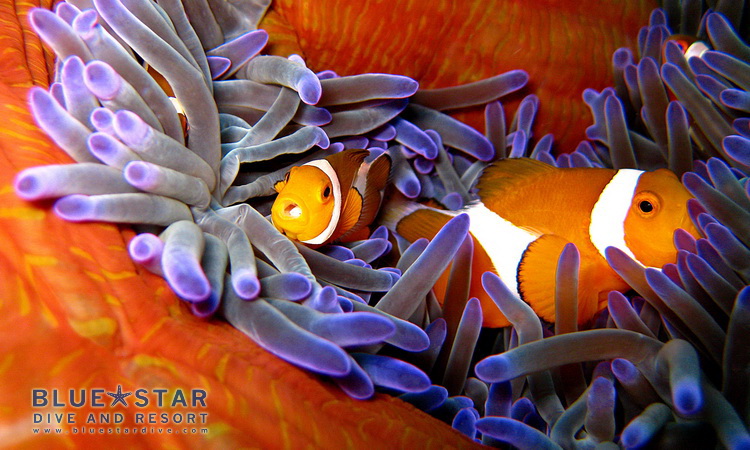


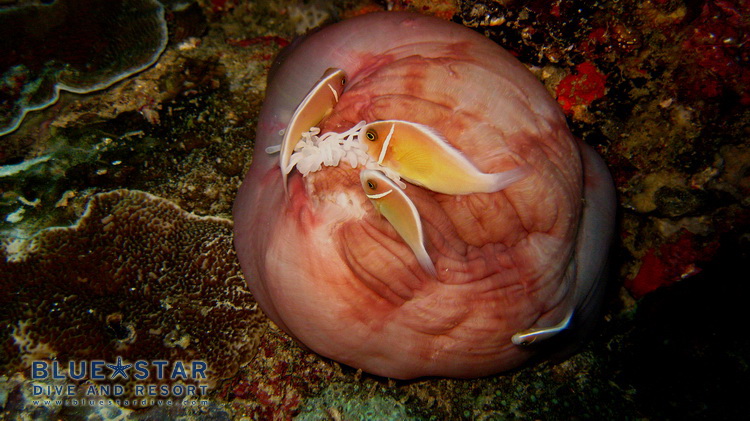
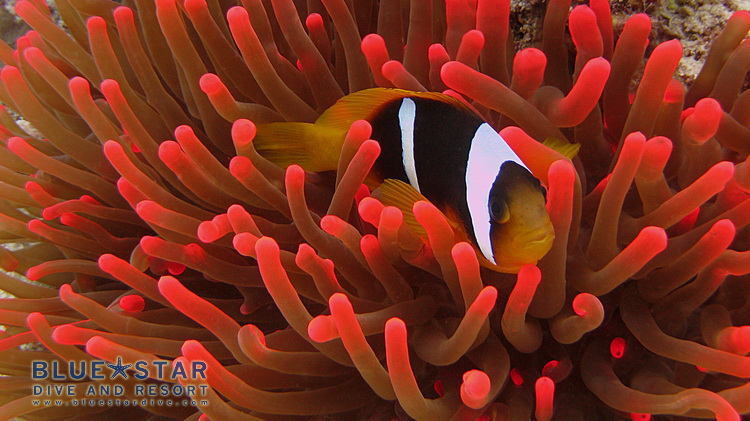
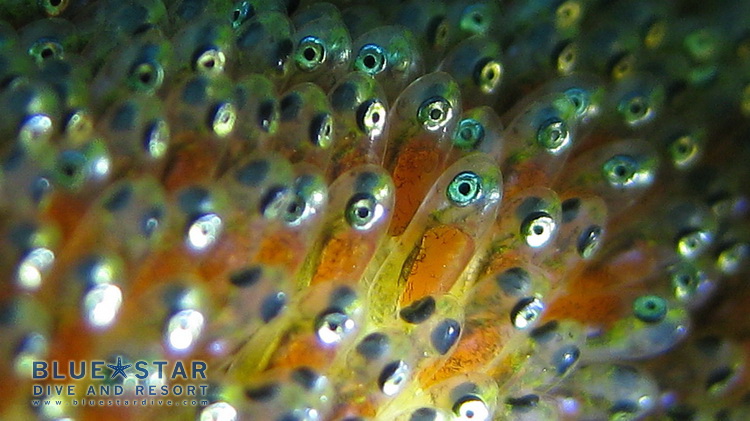
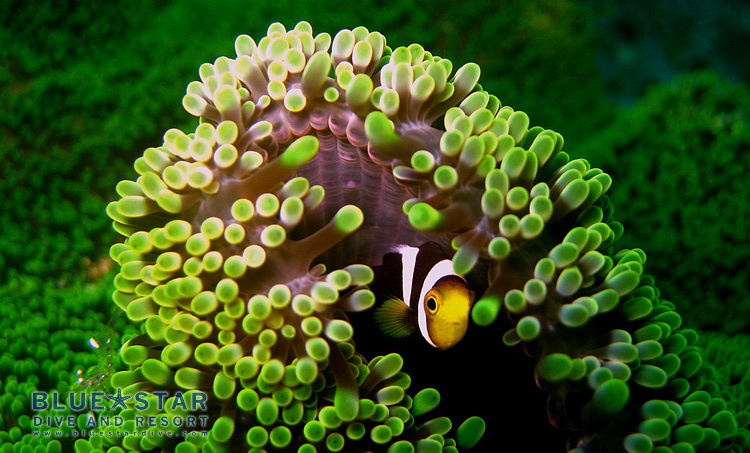
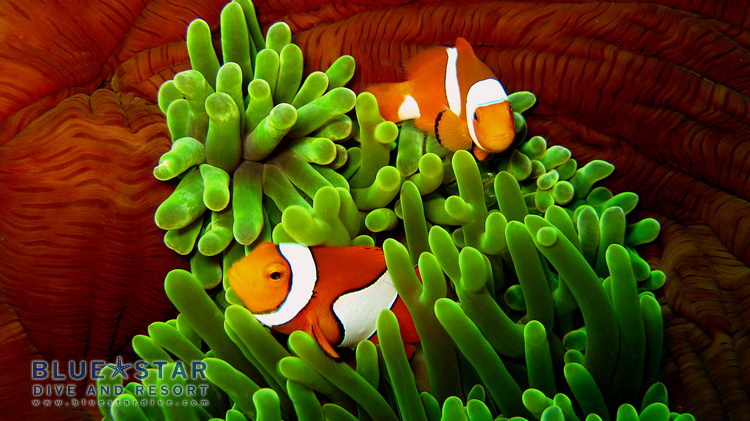
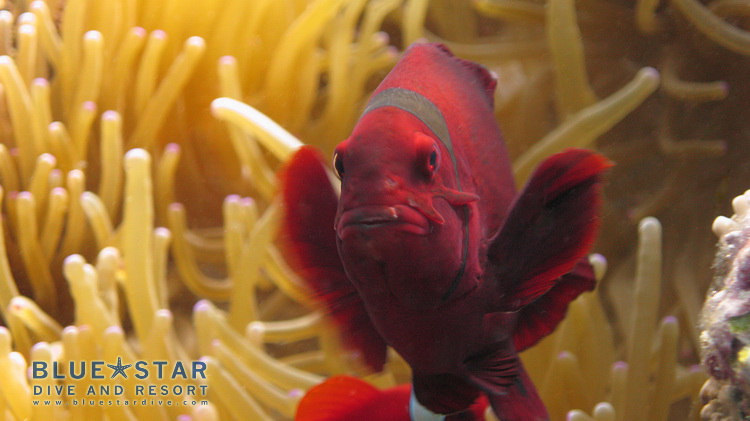


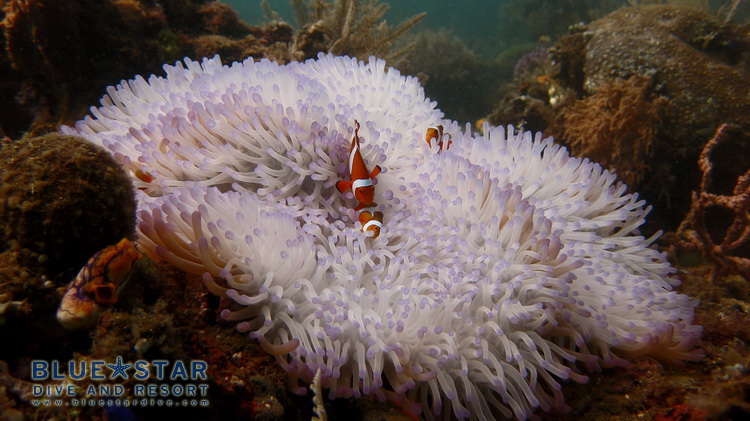
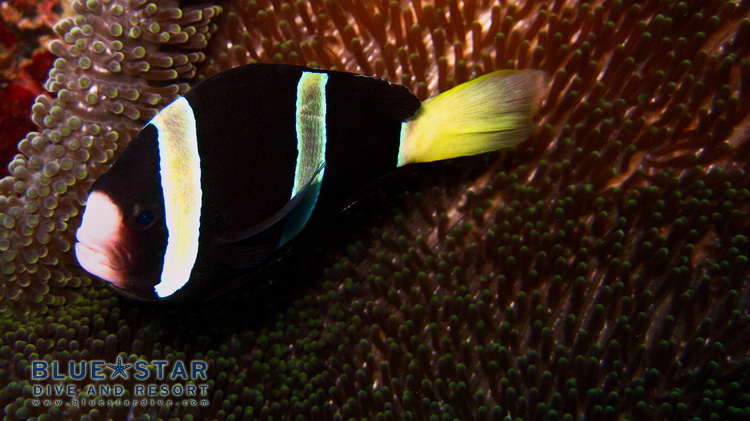
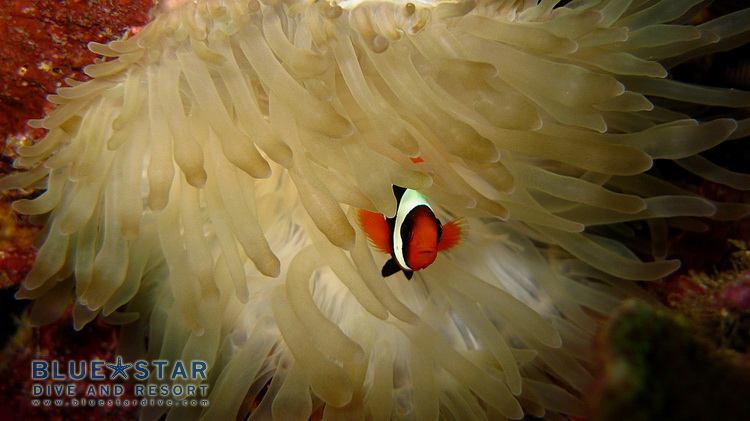
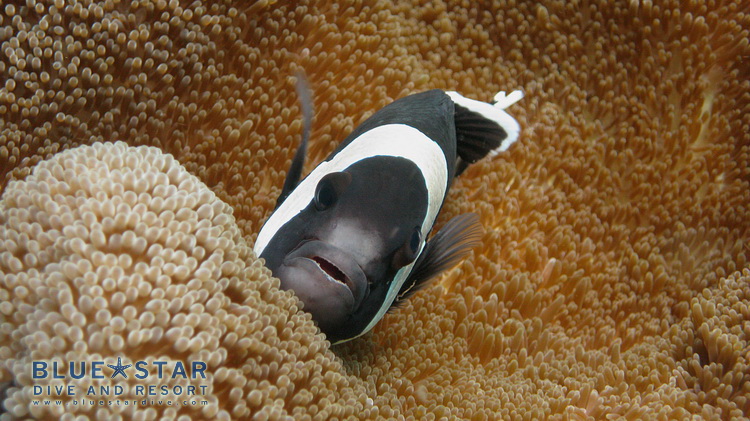


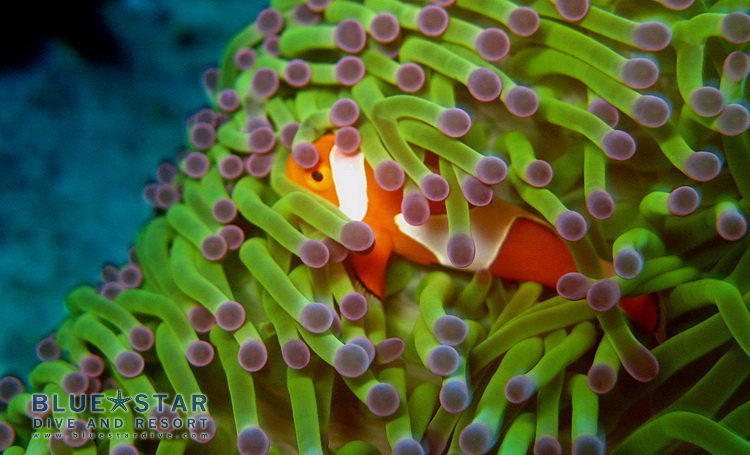




Recent Comments